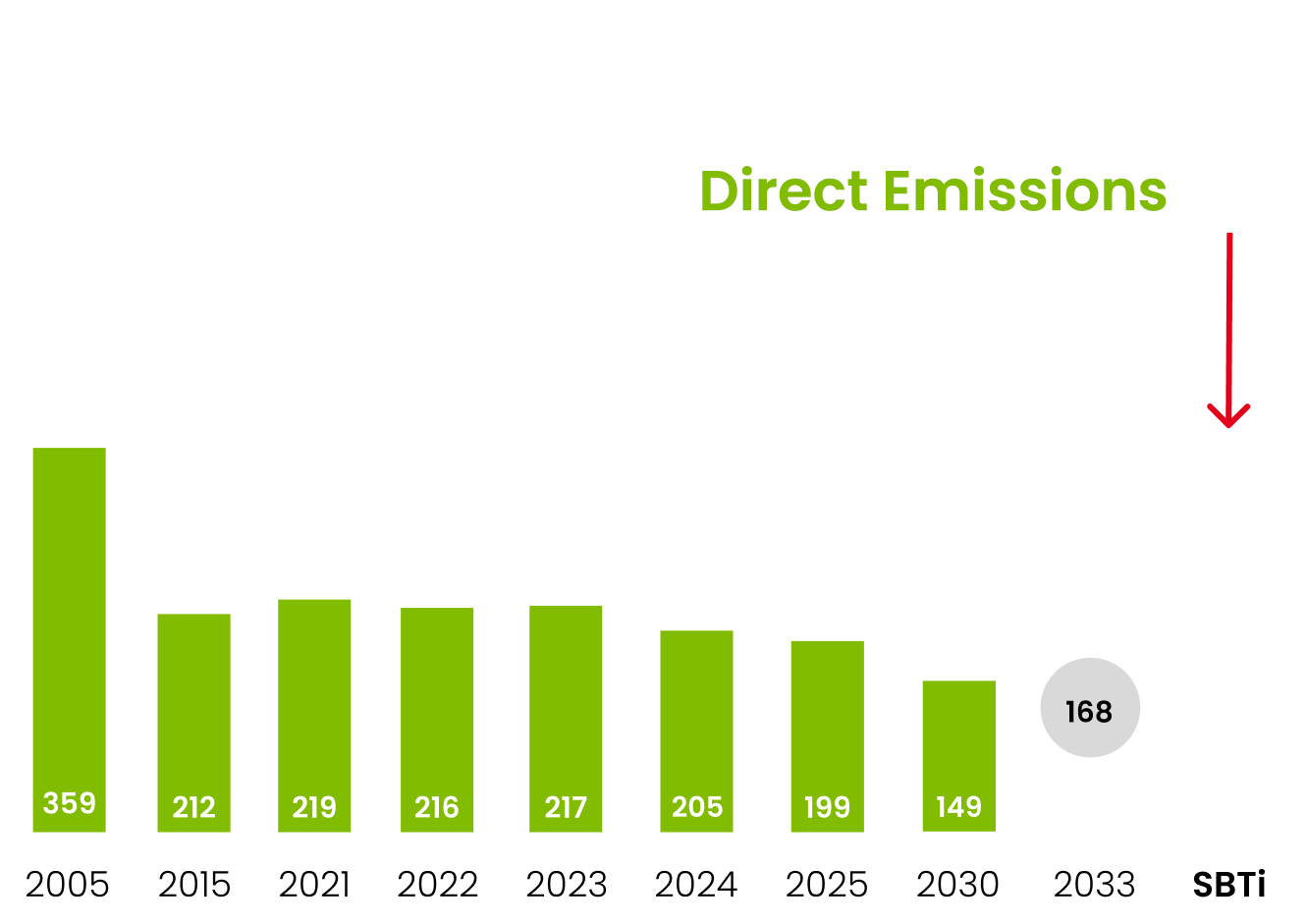Scope 1
Direct greenhouse gas emissions resulting from the company's activities.

Sidenor, aware of the need for transformation, has incorporated decarbonization and circular economy into its company strategy as key pillars to ensure its competitiveness.

Continuous improvement of our processes, based on life cycle analysis, energy efficiency, decarbonization, and circularity criteria.
Analysis of climate risks and opportunities in response to changing contexts.
Understanding and addressing the needs of our stakeholders.
Research, innovation, and technological prospecting led by our R&D department.
Review of the decarbonization strategy, adapting it to changing contexts.
Process governance by our Management, ensuring compliance with the strategy and resource allocation.
To position SIDENOR as a leader in sustainable products in the special steels business.

In line with this commitment, in 2021 Sidenor published its greenhouse gas emission reduction targets, which were reviewed and updated in 2023 in accordance with the SBTi initiative, and then approved on January 15, 2024.
This approval means that the target is based on scientific criteria and aligned with the goal of keeping global warming below 1.5°C, and meets the objectives of the Paris Agreement.
In addition to direct greenhouse gas emissions resulting from the company’s activities (Scope 1), Sidenor is now also setting ambitious targets to reduce Scope 2 emissions (related to energy) and Scope 3 emissions (raw materials, transportation, etc.).
Sidenor has committed to following the Science-Based Targets initiative and has set ambitious targets. We will contribute to curbing global warming.

Direct greenhouse gas emissions resulting from the company's activities.

Emissions associated with electricity consumption.
61,5%
reduction

Emissions related to raw materials, transportation, etc.
32,5%
reduction
Impact of decarbonization actions on our performance.
Since 2021, Sidenor has calculated and certified its organizational footprint according to the GHG protocol.
Annual CO₂ generation per tonne of steel produced.

Sidenor Aceros Especiales S.L. demonstrates its commitment and transparency regarding climate change by reporting to the leading international environmental impact disclosure initiative: Carbon Disclosure Proyect (CDP).
In 2024, it received a B rating, which represents a Management band. This score is above the steel industry average.
Sidenor has acquired solar parks that guarantee the consumption of 100% renewable electrical energy.
This initiative is part of Sidenor’s commitment to decarbonization through the consumption of 100% renewable energy.
In 2023, we signed a supply agreement for biogenic coal, which allows us to decarbonize part of the coal consumption in the electric furnace process.
Gas consumption is the greatest decarbonization challenge that we are facing.
By 2025, we will have the necessary equipment to conduct the first industrial test with green hydrogen in our production process.
The choice of steel quality can significantly affect the CO₂ footprint, primarily due to the contribution of the supply chain.
Ecodesign example:
Optimizing steel quality
The choice of steel quality can significantly affect the CO₂ footprint, primarily due to the contribution of the supply chain.
The electrification of the vacuum process in the steelworks will lead to an emission reduction of > 6,000 t CO₂ per year.
In the last 5 years, we have managed to reduce specific gas consumption (kWh/t) by 14%, moving towards a more efficient and sustainable production model.
Sidenor collaborates with the entire value chain to design and develop increasingly sustainable and environmentally friendly technologies, processes, and products.
Contribute to the decarbonization of the steel sector by using hydrogen as an alternative energy source at various stages of the steel production process.
3 years.
Reduce natural gas consumption in ladle heating combustion processes by using oxygen/gas or green hydrogen as fuel.
4 years.
Demonstrate the technical feasibility of using biomass/biochar in EAF foaming processes.
4 years.